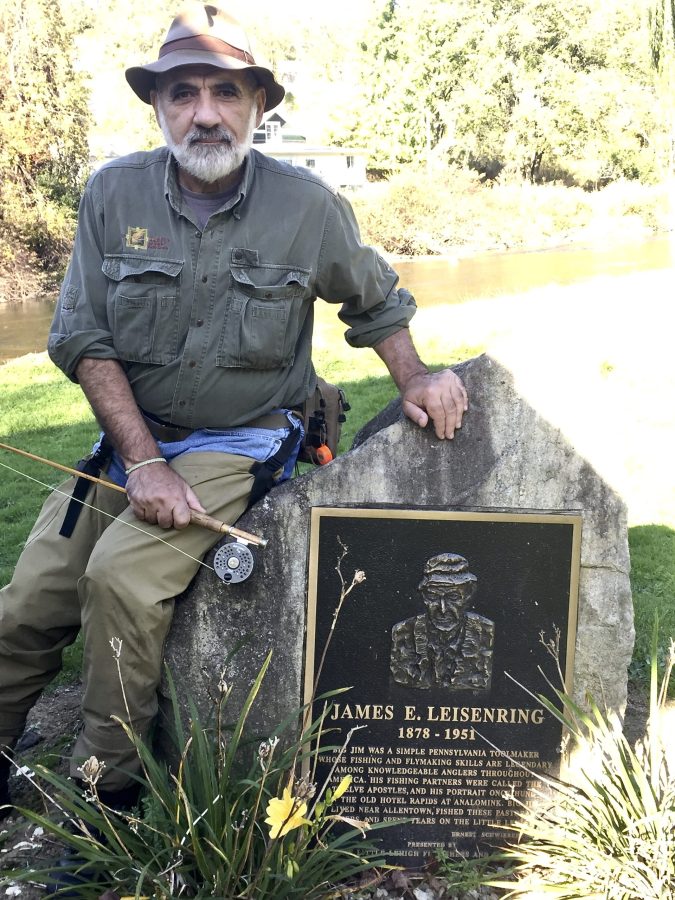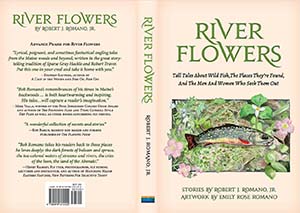Easing Back into Our Old Ways

Ask the trout of Bonnie Brook about their politics and they might tell you they are of the conservative persuasion. They’ll proudly describe growing up from eggs spread naturally by their parents. No hatchery trucks pulling up by the side of the road. No official opening day or closed season. No need for state interference.
What they don’t tell you is, by the nineteen-sixties the stream’s native brook trout had all but been obliterated by over-fishing and environmental degradation. To compensate for these excesses, the state called upon its hatchery trucks to fill the little stream’s riffles and runs with brook trout, brown trout, and even rainbow trout. Back then, the rivulet had the same seasonal restrictions as other larger rivers and streams.
Whether it was fiscal pressures or liberal optimism, the hatchery trucks made their last deposit sometime in the nineteen-seventies. Thanks to the Clean Water and Air Acts, Bonnie Brook recovered from its previous environmental woes and those hatchery fish began to lay eggs, populating its current with their progeny ever since. State restrictions on size and number, a no-live-bait regulation combined with voluntary catch and release policies have allowed these wild fish to thrive. Opening days and closed seasons became no longer necessary now that taxpayer funds were not required to fund stocking the stream.
All this brings me to this morning. Sun was streaming through my window when I woke. After a hot shower, I brewed my morning tea. Mug in hand, I padded into what had been our daughter’s bedroom until we converted it into a library after she struck out on her own. According to the outside thermometer the temperature had broken through the forties. The usual suspects—finches, a few titmice, and chickadee were flitting around the bird feeders. In between three or four mourning doves and a number of juncos, a small gang of sparrows pawed at the ground. To my surprise, like a bright blue comet, a male bluebird streaked across the yard. It was soon followed by a female. Although it will be more than a month before the official opening day of the fishing season, this was all I needed to declare opening day on Bonnie Brook.

Bob Romano’s newest book River Flowers is available now. Visit forgottentrout.com for ordering information.
In a mad dash, I managed to collect my gear from the four corners of our house. I pulled a box containing a number of flies from the top of a stack that threatened to topple like the Berlin Wall. Within its plastic compartments were various patterns meant to imitate little black stoneflies. I’d spent the previous few evenings hunched over a vise, experimenting with black dubbing and dun-colored CDC puffs in preparation for one of the little stream’s most reliable hatches.
My fly rod, the shorter one constructed of caramel-colored cane by the Pennsylvania rod maker Tom Whittle was waiting in its wooden tube where I’d placed it beside the back door along with a number of other rods sometime last November. They leaned against the corner as if sharing the latest gossip while gathered at the local pub.
I removed my fly vest from a hanger, a brown-and-red tweed waistcoat my wife bought for me when we visited Ireland, and after a long search found my flannel shirt crumbled up in the back of the closet. My wide-brim hat was where I set it at the close of last season, below a print of a John Swan watercolor that depicts a sport sitting in the bow of a canoe. The painted angler’s backcast rises in a tight loop over the shoulder of a guide who stands in the stern, knees braced, a paddle in his two hands while he steadies the craft. The hat rested atop a row of books, mostly about the rugged country of northern Maine, some published in the 1930s and others in the 40s. The Orvis Battenkill reel, an inexpensive, but reliable container for my four-weight line, was where I expected to find it.
Over the years, my father-in-law had become my best friend. We tramped through forest and field together. In his eighties, he continued to help with felling trees for the wood stove. Electricity and the internal combustible engine are two mysteries too complicated for me to ponder, and so it was Charlie, who wired our pole barn for lights and kept my 8N tractor running. He believed a fish fairly caught belonged in the pan and not the palm. For this reason, although we fished together on other rivers, I never invited him to Bonnie Brook. One winter, he helped me construct a shallow wooden case out of pine boards we sanded and varnished. It contains a number of compartments, with felt along the sides, each large enough to hold a fly reel. Charlie died at age ninety-three. I think of him every time I open the lid of that box.
It was nearly eleven by the time I hit the road. By then, the temperature had risen to a balmy fifty-three degrees. I drove out of town, and after a few minutes residential homes turned to farmland. The fields are fallow this time of year, the cows and sheep in their stalls.
Our home is located in the foothills of the Kittatinny Mountains, and so it wasn’t long before the road began to rise. It’s been a winter of little snow, but a few patches were visible under the dense stands of rhododendrons and mountain laurel flanking the macadam. I hadn’t seen any other vehicles, except for a few cars parked where the Appalachian Trail crosses the road. After the familiar climb, the road leveled off, revealing a vista of forested hills. The hardwood trees remained bare. When a passing cloud hid the sun, the landscape suddenly seemed uninviting.
I pumped the brakes at the bottom of the descent, stopping on the small bridge that crosses the little brook. The stream ran briskly. Above the bridge, the current swept down through a narrow ravine for perhaps a quarter mile. Falling under the shadows cast by the branches of swamp maple and pin oak, it formed a number of plunge pools. I’ve taken a ten-inch rainbow in a pool formed in front of a large boulder along the far bank only a few yards above the bridge. There’s a nice run below the bridge where two eleven-inch brook trout like to hold, but only when the water level meets with their approval.
After clipping my hippers to the loop of my jeans, I rigged the little cane rod and set out across a pasture flanking the stream. Although the temperature had risen into the fifties, the ground remained frozen. A trio of deer raised their heads, loping away with their white tails flared in mock alarm.
I’d been ill for the better part of the winter, culminating in walking pneumonia, and so my legs were not used to the exertion. After making my way down to the stream, I sat on a boulder to catch my breath. The current was slower in this stretch, the pools deeper. I’d hoped to find stoneflies hovering over the water, perhaps crawling over the branches of the brambles and bushes that grew along the sides of the stream, but there was no sign of the aquatic insects. The sullen current seemed devoid of life.
It took a while to knot a soft-hackled wet fly to my tippet. Making a short upstream cast, I kept my line off the water while allowing the fly to sink as it passed along the far bank, only a few feet away. At the end of the drift, I allowed the current to raise the pattern, relying on the technique espoused by “Big Jim” Leisenring.
In this manner, I worked my way upstream. My first few casts were awkward, my legs unsteady, as they always are this time of year. There was a time when I could thread a tippet through the eye of a #20 trico pattern at dusk while my hearing was as acute as Natty Bumppo’s. These days, I require cheaters to knot a #12 fly. Worse, I wouldn’t hear a black bear rambling in my direction until it tapped me on the shoulder. So you can understand why I worry that my motor skills, diminished over the winter, may not return. But this stream is like an old friend. Uncomfortable after being away for a time, we have too much history not to fall back into our old ways, and after a number of casts my rhythm returned while my legs slowly regained their confidence.
An hour passed, maybe more. I can’t say for sure, for I make it a habit not to wear a watch while on the stream. During that time the sun remained behind a bank of clouds, the temperature falling back into the forties. It felt like rain.
My mind had drifted toward thoughts of a grilled cheese sandwich and a warm bowl of my wife’s tomato soup when the little bamboo rod bent forward, bringing me back to the stream. Pulling back against the pressure on the other end, I raised the tip of cane. Swinging my quarry into the palm of my hand, I released a soggy leaf back into the current.










